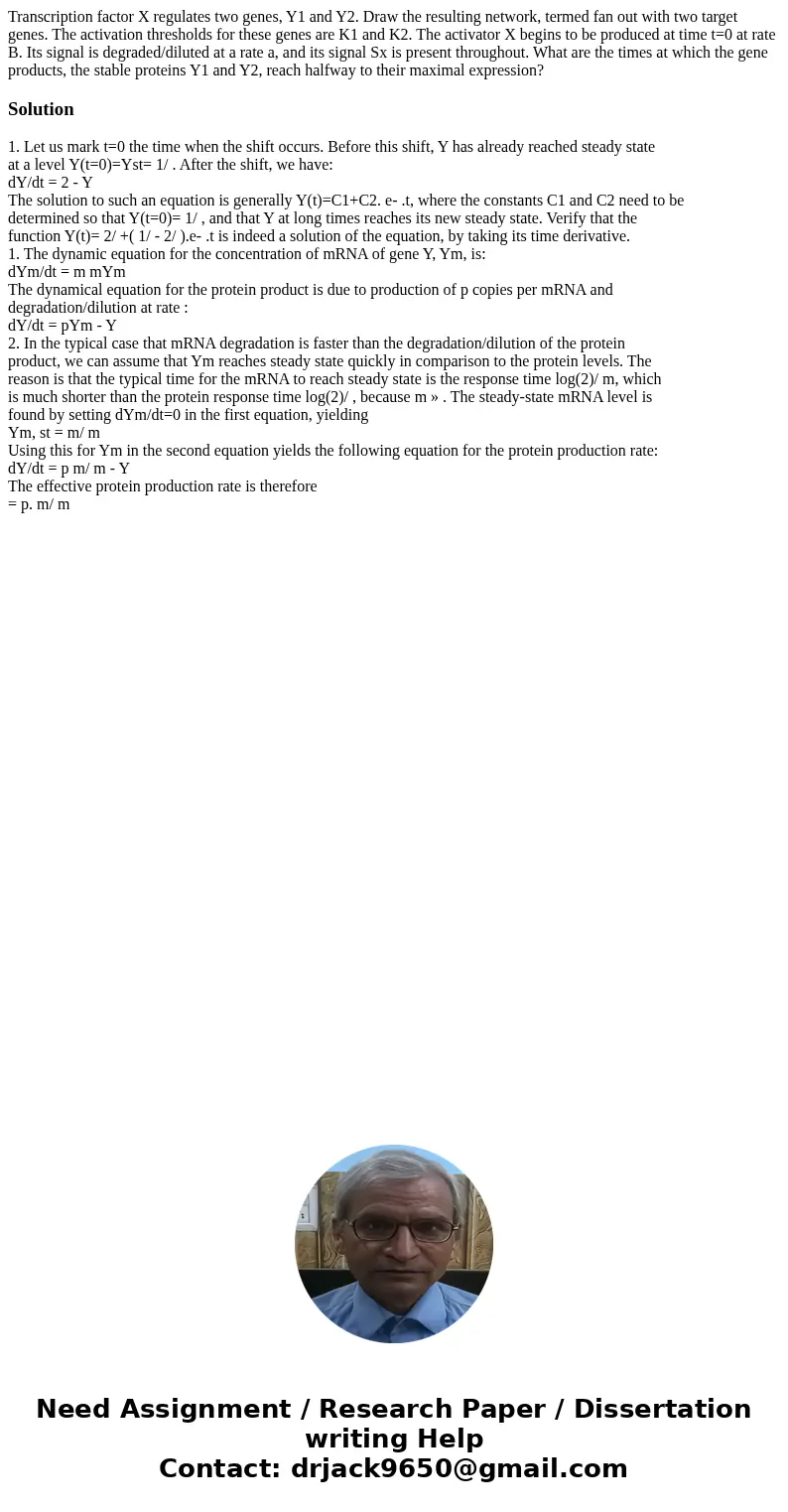Transcription factor X regulates two genes Y1 and Y2 Draw th
Transcription factor X regulates two genes, Y1 and Y2. Draw the resulting network, termed fan out with two target genes. The activation thresholds for these genes are K1 and K2. The activator X begins to be produced at time t=0 at rate B. Its signal is degraded/diluted at a rate a, and its signal Sx is present throughout. What are the times at which the gene products, the stable proteins Y1 and Y2, reach halfway to their maximal expression?
Solution
1. Let us mark t=0 the time when the shift occurs. Before this shift, Y has already reached steady state
at a level Y(t=0)=Yst= 1/ . After the shift, we have:
dY/dt = 2 - Y
The solution to such an equation is generally Y(t)=C1+C2. e- .t, where the constants C1 and C2 need to be
determined so that Y(t=0)= 1/ , and that Y at long times reaches its new steady state. Verify that the
function Y(t)= 2/ +( 1/ - 2/ ).e- .t is indeed a solution of the equation, by taking its time derivative.
1. The dynamic equation for the concentration of mRNA of gene Y, Ym, is:
dYm/dt = m mYm
The dynamical equation for the protein product is due to production of p copies per mRNA and
degradation/dilution at rate :
dY/dt = pYm - Y
2. In the typical case that mRNA degradation is faster than the degradation/dilution of the protein
product, we can assume that Ym reaches steady state quickly in comparison to the protein levels. The
reason is that the typical time for the mRNA to reach steady state is the response time log(2)/ m, which
is much shorter than the protein response time log(2)/ , because m » . The steady-state mRNA level is
found by setting dYm/dt=0 in the first equation, yielding
Ym, st = m/ m
Using this for Ym in the second equation yields the following equation for the protein production rate:
dY/dt = p m/ m - Y
The effective protein production rate is therefore
= p. m/ m

 Homework Sourse
Homework Sourse